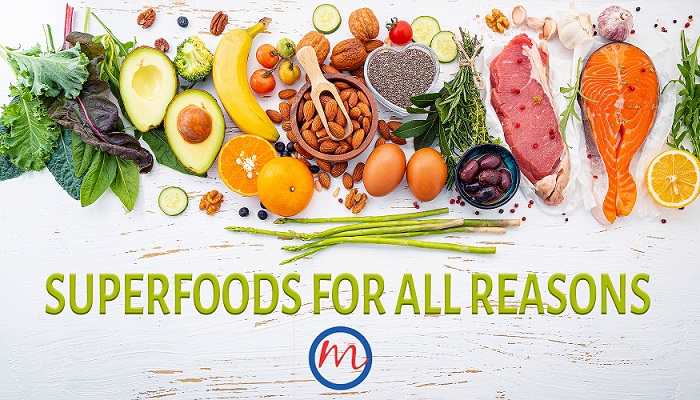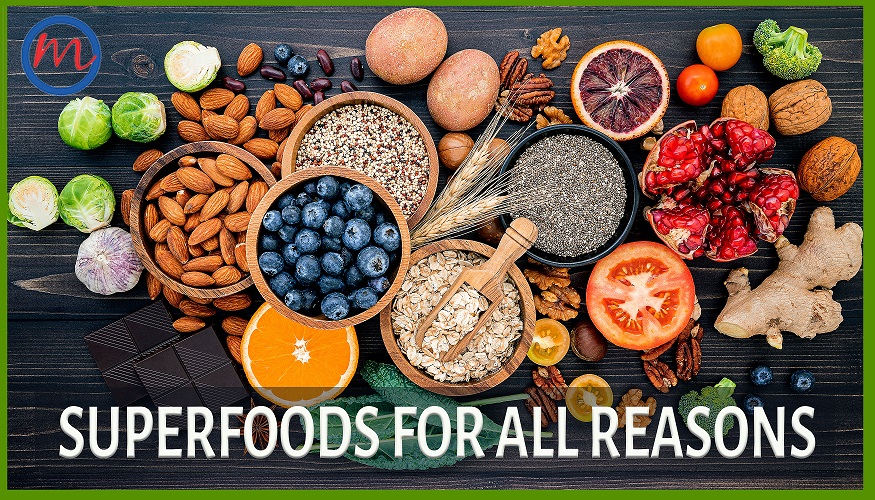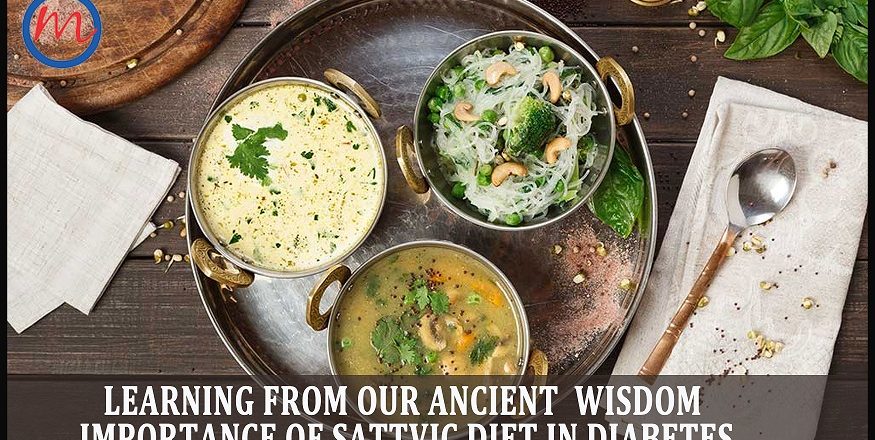Making superfoods a part of your diet is a great idea. Just be aware of the marketing hype that is often at work behind new trends and claims.
Superfoods are all the rage. And health-conscious consumers love the attributes that go with the “superfood” label: detoxifying, immune-boosting, anti-ageing, stress-reducing and so on.
“Food as medicine” was the approach to health and healing for centuries. The industrial and agricultural revolution from the late 18th century changed our relationship with food dramatically. We consumed more calories from animal-based products, sugars and fats, while fresh fruits, vegetables and unrefined cereals went down.
This resulted in an increase in diseases that used to be rare or non-existent. To deal with it, modern medicine became more invasive and granular. Two major developments rose in protest in recent years: the organic food movement and the natural health movement. Superfoods are an essential offshoot of the new way of claiming health in a natural and simple way.
WHAT ARE SUPERFOODS?
Superfoods do not form a food group. There are no established criteria for determining what is (and what is not) a superfood. These are mostly plant-based foods, chockfull of important nutrients that can power-pack one’s diet and wellbeing. For instance, antioxidants to ward off cancer; healthy fats, to prevent heart disease; fibres, to prevent diabetes and digestive problems; potent plant chemicals, to reduce inflammation in the body.
It is true that healthy dietary patterns can reduce the risk of chronic diseases—high blood pressure, heart disease, diabetes, and certain cancers—but no single food or diet can offer all the nutrition, health benefits, and energy we need to nourish ourselves. The key to a healthy diet remains a balanced consumption of a variety of nutritious foods in the right quantities. Consuming superfoods is a great idea, if only you are conscious of the marketing hype that is often at work behind the new trends.
IN A NUTSHELL
Here is a guideline of foods that are good for you:
Dark, leafy greens are a good source of vitamin A, vitamin C, and calcium, as well as several phytochemicals (chemicals made by plants that have a positive effect on your health). They also provide fibre and high α-linolenic acid content. Hence, they protect your heart, lipid profile, blood glucose and immunity.
- Nuts, seeds and legumes are a good source of plant protein. They are also high in heart-friendly alpha-linolenic acids, soluble fibres, proteins, vitamins, minerals.
- Monounsaturated fatty acid (MUFA) are healthy fats. Researchers have consistently found that people with diets rich in monounsaturated fatty acids had lower blood pressure, blood glucose, LDL (bad) cholesterol levels, less body fat and better heart health. Nuts and alsolike olive oil, groundnut oil and mustard oil are rich source of MUFA.
- Whole grains are a good source of both soluble and insoluble fibres, several B vitamins, minerals, and phytonutrients. They have been shown to lower cholesterol and protect against heart disease and diabetes.
- Yogurt is a good source of calcium and protein. It also contains probiotics, for “good bacteria,” that can protect the body from other, more harmful bacteria.
- Cruciferous vegetables like cabbage, cauliflower, broccoli, radishes, turnips, sweet potato and carrot are an excellent source of fibre, vitamins, and phytochemicals, which may lower the risk of type 2 diabetes, heart disease and protect cells from DNA damage.

SUPERFOODS FOR DIABETES
A list of superfoods that might help people with diabetes:
Jamun
Or the Indian blackberry, is high in fibre, antioxidants and disease-fighting nutrients. It has hypoglycaemic properties (or, the ability to reduce sugar in blood). With astringent and anti-diuretic effects, Jamun helps reduce frequent urination, flush toxins out of the kidneys. Jamun contains essential vitamins and minerals, especially vitamin C, vitamin K, manganese, potassium and iron.
Tulsi
Celebrated both for sacred and profane purposes, tulsi (the Indian basil) is the latest superfood being embraced by the world. A pre-eminent herb in Ayurveda, tulsi (Ocimum sanctum Linn), scientific research now confirms its protective role in metabolic syndrome and its consequences. There is evidence to suggest that tulsi enhances insulin secretion, reduces blood glucose, corrects abnormal lipid profiles, prevents weight gain, protects the liver and kidneys from the metabolic damage caused by high glucose levels, reduces inflammation and reduces many diabetic symptoms in patients with type 2 diabetes.
Walnuts
Walnuts not only taste great but are exceptionally nutritious. A rich source of healthiest fatty acid omega-3, especially the heart-friendly alpha-linolenic acid, belly fat-reducing soluble fibres and one of the highest concentrations of antioxidants, which helps in lowering blood sugar, walnuts are being called a superfood. As a great alternative to unhealthy simple-carbohydrate snacks like chips or crackers, walnuts should grace the diet plan of anyone with diabetes. Walnuts have received much attention for their effects on cardiovascular health. A 2018 study found a drop of 47 percent in prevalence of diabetes among walnut consumers, compared to non-consumers, and the effect was more potent among women than men (Arab, L. et al, 2018, October, “Association between walnut consumption and diabetes risk in NHANES,” Diabetes Metab Res Rev.)
Chia seeds
An increasingly popular food ingredient, sprinkled on yogurt, cereals and oats. Chia seeds are rich in αlpha-linolenic acids, fibres, proteins, vitamins, minerals and antioxidants—leading to the claim that it is a superfood. All of these are believed to help reduce the risk of type 2 diabetes and its complications. About two tablespoons of dried chia seeds contain 139 calories, 4 grams of protein, 9 grams fat, 12 grams carbohydrates and 11 grams of fibre, apart from vitamins and minerals.
Moringa
Moringa oleifera (MO), an edible tropical tree, has been used traditionally in the management of type 2 diabetes in India. Although many of its health benefits are yet to be investigated by scientists, MO is gaining grounds as a superfood. What has been proved is its strong antioxidant, anti-inflammatory and cholesterol-lowering effects, which can also benefit various metabolic and neurological conditions, including diabetes. Research is ongoing on MO compounds that seem to lower blood glucose: flavonoids like quercetin and kaempferol, phenolic compounds like chlorogenic, caffeoylquinic, tannins and bioactive compounds, isothiocyanates, which are also anti-inflammatory. MO leaves are anyway an exceptionally rich source of nutrients: vitamins B6, B2, C and A, iron, magnesium and proteins.
Green tea
Green tea is great for people with diabetes because it helps the metabolic system function better. Studies have found that people who drink green tea regularly have smaller waist-size and lower body fat. Green tea can also help reduce your blood pressure and harmful LDL cholesterol levels. Tea, in general, is high in antioxidants and drinking a few cups a day may help counteract the processes that lead to cancer, heart disease, and dementia.
Dark chocolates
Studies bear out that daily consumption of dark chocolate has positive effects on insulin sensitivity and blood sugar. That’s because, dark chocolate contains polyphenols, that have antioxidant properties and are believed to improve insulin sensitivity. What if you already have diabetes? Consuming one square of dark chocolate is ok for those with diabetes. Just keep in mind that chocolate is high in fat and calories.
Fatty fish
Fatty fish, free of environmental pollutants, reduces the risk of developing type 2 diabetes. A rich source of omega-3 fatty acids, they are good for the heart and cholesterol. In 2018, scientists at the ICAR with collaborating institutions created India’s first database of the nutritional composition of 100 edible fish species. The database, NutriFishIn, documents found that the Hilsa fish is among the best for omega-3 fatty acids, followed by sardines.
Book Appointment
[gravityform id=”10″ title=”false” description=”false” ajax=”true”]




